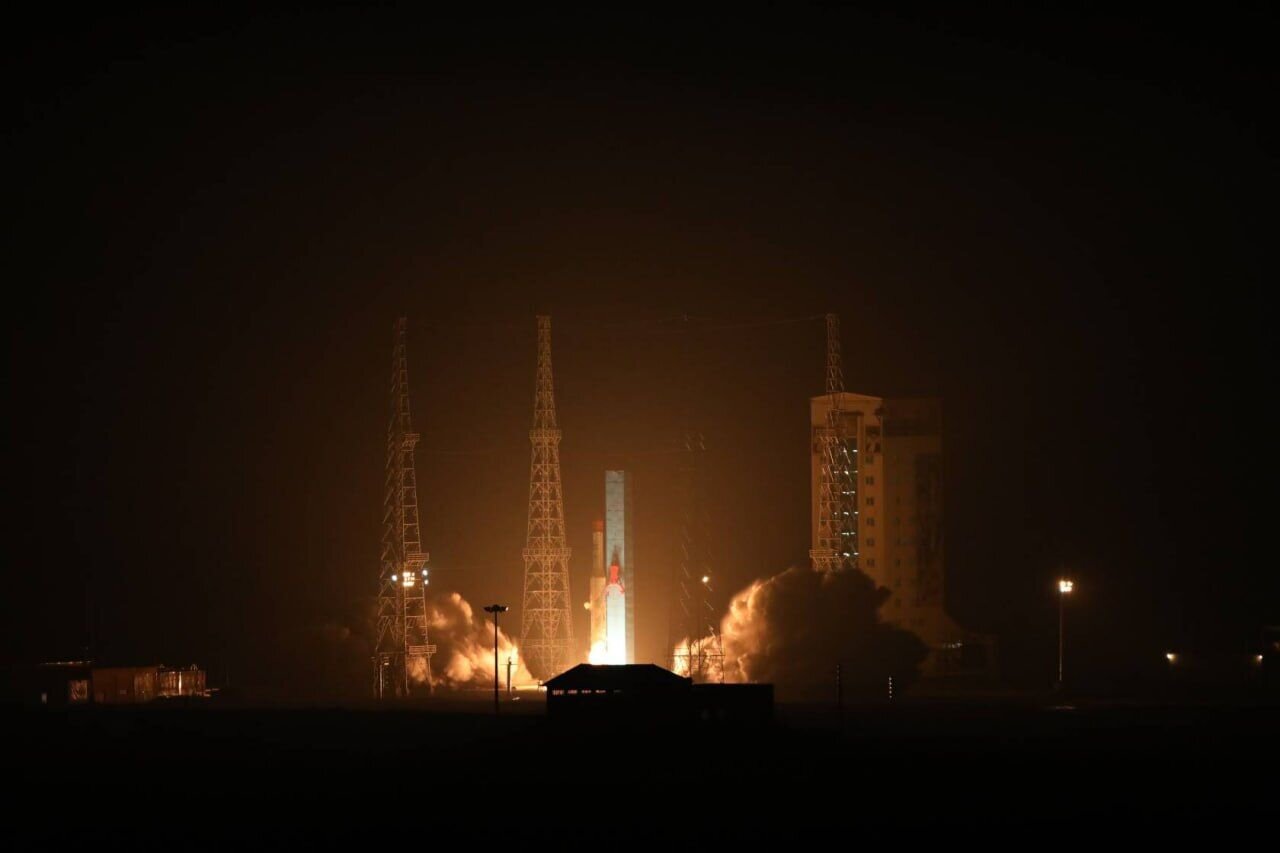The Sky's the Limit
Iran successfully launches three satellites into space with Simorgh satellite carrier

TEHRAN- Iran successfully launched three satellites into space on the eve of the 45th anniversary of the Islamic Revolution.
The launch, carried out on Sunday, marks the first time Iran has successfully deployed multiple satellites in a single mission, using its domestically developed Simorgh satellite carrier.
The satellites launched were Mahda, a microsatellite designed for testing satellite subsystems, and two nanosatellites named Keyhan2 and Hatef 1, one developed by SA IRAN company to demonstrate positioning technology for the space station, and the other to test narrowband communication technology using the Internet of Things.
The Simorgh satellite carrier, with two stages of liquid fuel, was built by the Iranian Ministry of Defense. This successful launch is the 11th in the Raisi administration and a testament to Iran's growing capabilities in space technology.
The Simorgh missile, measuring 25.9 meters in length, comprises a first stage of 17.8 meters and a second stage of 8.1 meters. The first stage has a diameter of 2.4 meters, while the second stage boasts a diameter of 1.5 meters. At the unveiling, the first stage demonstrated a thrust of 142 tons, with the second stage exhibiting 7.2 tons.
Typically, satellite rockets are engineered with two or three stages. The separation of each stage during flight serves to decrease the overall weight of the rocket, enabling subsequent stages to be completed with reduced fuel consumption.
On January 16, 2019, marking the 40th anniversary of the Islamic Revolution's victory, Brigadier General Amir Hatami, then Defense Minister, oversaw the launch of a satellite missile from the Imam Khomeini space base in Semnan province.
The Simorgh satellite rocket, a two-stage system powered by liquid fuel, is capable of launching heavy satellites weighing up to 250 kg into a 500 km orbit around the Earth at an inclination angle of 55 degrees. It excels in injecting satellites of several hundred kilograms into low Earth orbits (LEO).
The Mahda satellite, a research satellite crafted at the Iranian Space Research Institute, was launched simultaneously with two other Iranian satellites. Ahmad Hosseini, spokesperson for the Space Department of the Iranian Defense Ministry, described the Hatef 1 satellite as "the first research step in line with the Internet of Things (IOoT) system in the country's 10-year space program."
Highlighting the diverse applications of space technology in human life, Hosseini emphasized the significance of the Simorgh satellite carrier as the new generation of liquid fuel satellites for Iran. He proudly stated that the country's experts achieved this technological milestone through the use of local knowledge.
Emphasizing the prowess of the Simorgh satellite carrier, Hosseini assured that it can fulfill most of the country's space requirements and satellite development needs, eliminating concerns about future launches due to its domestic capabilities.
According to Hosseini, the Keyhan nano satellite, designed by experts in the Ministry of Defense, represents the first research step in basic space navigation and positioning. After establishing communication and making necessary adjustments during satellite placement, further steps will be taken for its launch in this area.
The Islamic Revolution Guard Corps (IRGC) successfully launched its Sorayya satellite into a 750-kilometer orbit on January 20.
The launch marked a significant milestone for Iran's aerospace capabilities and further demonstrates its growing ambitions in space technology.
The three-stage solid-fuel Qaem 100 satellite carrier, developed by the IRGC Aerospace Force, carried the Sorayya satellite into space. The satellite's successful placement in orbit has set a new record for Iran, as it represents the first time the country has launched a satellite into this altitude.
The launch was witnessed by Major General Hossein Salami, the commander of the IRGC, Hassan Salarieh, the head of the Iranian Space Agency, Amir Ali Hajizadeh, commander of the IRGC Aerospace Force, and a group of military figures.
Sorayya is a research satellite with a mass of approximately 50 kilograms. It is equipped with a variety of scientific instruments that will be used to collect data on various aspects of space, including weather patterns, Earth's resources, and the environment.
The sub-orbital launch of the Qaem 100 satellite carrier was successfully conducted in October 2022. This successful orbital launch marks a significant step forward in Iran's space program and further strengthens its position as a regional space power.
The Qaem 100, with its three stages of solid fuel, is capable of placing satellites weighing up to 80 kilograms in an orbit of 750 kilometers from Earth's surface. This capability will enable Iran to launch larger and more sophisticated satellites in the future.
The successful launch of the Sorayya satellite is a testament to Iran's ongoing commitment to developing its space program and expanding its technological capabilities.
Leave a Comment